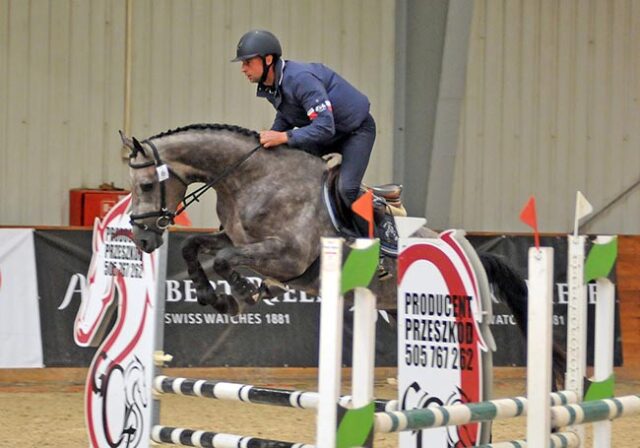
By Anna Cuber / Polish Horse Breeders Association (PZHK)
Photography: Katarzyna Wiszowaty
In Poland Performance Tests for saddle type stallions have been held for several dozen years. Initially, they were 12-month stationary tests conducted in a few stallion training centres, mainly for horses originating from the national horse studs and fully financed by the State.
With the passing years, these tests have undergone necessary changes. The testing time has been reduced on several occasions (the most recent version involves a 100-day training period preceding the actual performance test), as well as the financing and organisation.
Our studbook has also taken into consideration the frequent criticisms of sport riders who trained tghe young stallions at the stationary training centre, and has looked into the solutions that create the best effects for the present time using, for example, breeding in Belgium (BWP, sBs or Zangersheide). Therefore, the Polish studbooks of Warmblood horses – such as the Polish half-bred horse studbook (SP), Wielkopolska studbook (WLKP) and the Malopolska studbook (M), in which also Anglo-Arabian horses are recorded – have taken the decision to abandon the saddle-stallion stationary performance tests in favour of the Field Test (preceded by a 100-day training period) modelled on the BWP performance test. Stallions are divided into three basic groups: jumping, dressage, and horses with a high infusion of Thoroughbred blood who have been explicitly bred for eventing.
However, the superiority of Belgian stallions these days does not result from the formula of stallion evaluation that is the Field Test, but with the multi-stage selection and early presentation of stallions under saddle, with the most important element being the young stallions competing in competitions designed for them exclusively.
In Poland, unlike in Belgium, there are no competitions dedicated to temporarily approved stallions, although the Polish Championships for Young Horses (MPMK) performs that function. Just like the Bundeschampionate, those competitions where the best age-grouped horses from both domestic and foreign breeding compete in three disciplines are organised annually at the end of September at the same time and place. The top jumping, dressage, and eventing horses all meet there.
MPMK also plays a significant selection role because the Polish Horse Breeders Association invites the best professionals in Europe to act as judges and evaluate breeding material alongside the Polish judges in an impartial and professional manner. In these competitions, supervised by the Polish Horse Breeders Association, a stallion holding a time-limited licence approved in the Field Test has to take part and complete the MPMK in order to obtain a licence for life. If he does not meet this requirement in time as a four-, five-, or six-year-old, be may still receive a breeding licence based on sporting achievements – a, so called, sport path designed for seven-year-olds and older stallions in both the Olympic and non-Olympic disciplines. Stallions that have not taken the Field Test may still be granted a licence for life upon meeting certain criteria based on a required score in Polish Championships for Young Horses or other equestrian competitions... To read the complete article you need to be a subscriber
CLICK HERE TO SUBSCRIBE TO BREEDING NEWS
SUBSCRIBERS CAN READ THE COMPLETE ARTICLE BY LOGGING IN AND RETURNING TO THIS PAGE




